
Non-Vascular Plants, Vegetation Around Las Vegas
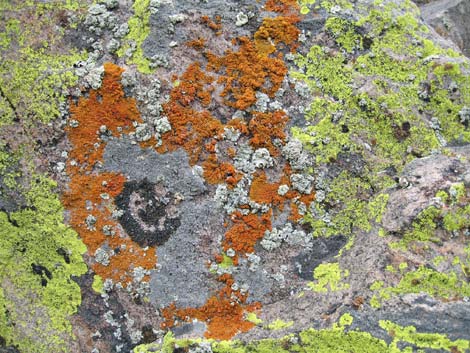 |
Lichens are odd, non-vascular, plant-like organisms that grow in many places, including on the surfaces of rocks in the desert. Lichens are not a single species; rather they are a collection of two or more species working together in a symbiotic way to support each other and continue life. Lichens are formed when fungus and algae (usually green alga or cyanobacterium) come together, each producing something that the other needs. The fungus provides support and shade, the algae engages in photosynthesis to produce food that is shared by both, and neither can live alone. Lichens are capable of drying out and coming "back to life," a trait that serves them well in desert environments. In lichens, each color generally represents a different species. Desert lichen shapes generally are "crustose" or "foliose." Crustose lichens form crusty growths on rock surfaces. Foliose lichens take on a variety of leaf-like forms and often are found growing on trees. |
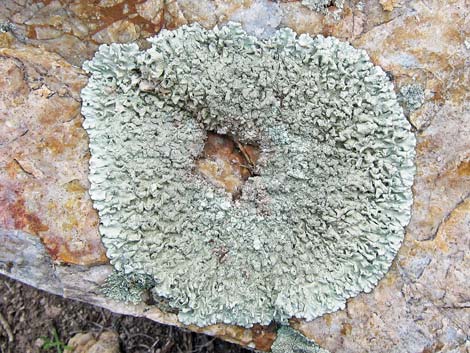 Crustose Lichen |
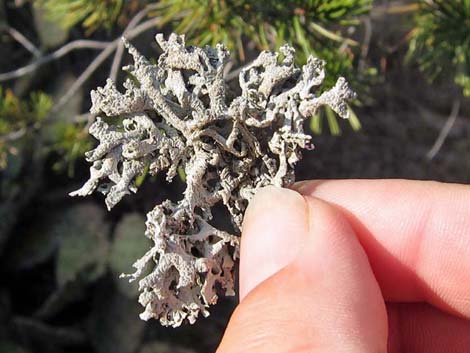 Foliose Lichen |
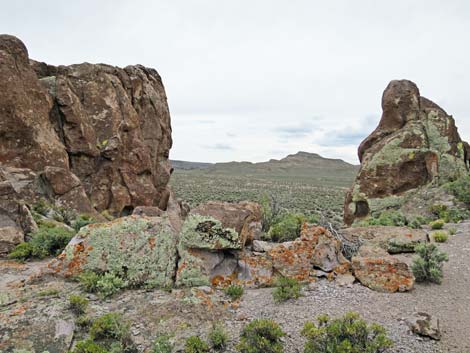 |
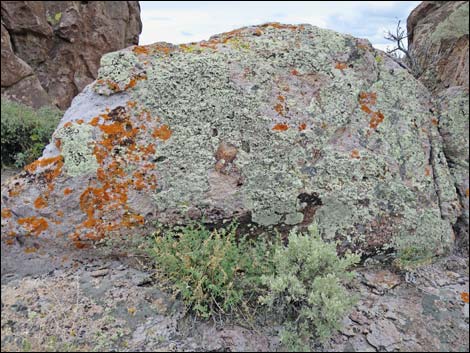 |
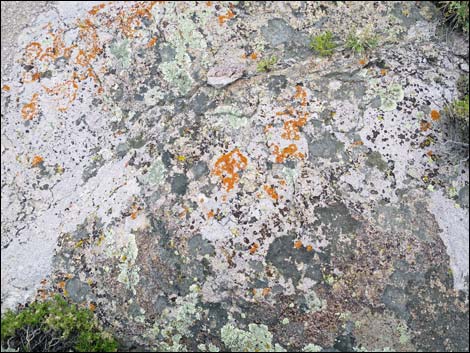 |
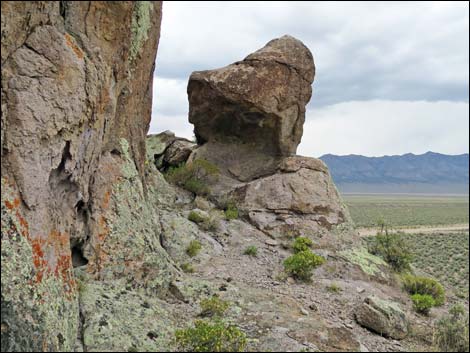 |
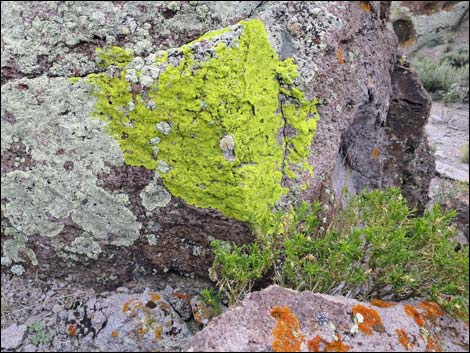 |
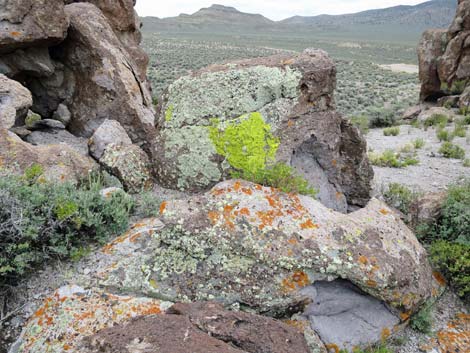 |
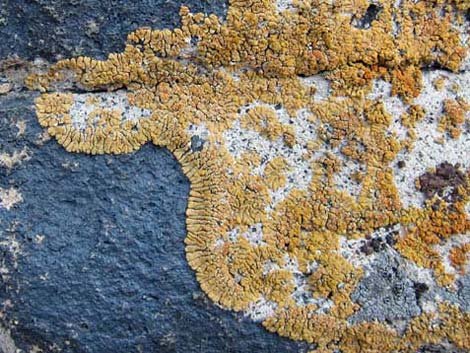 |
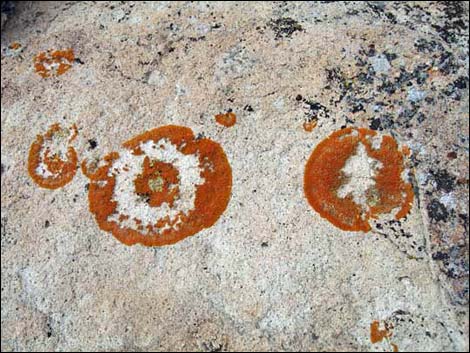 |
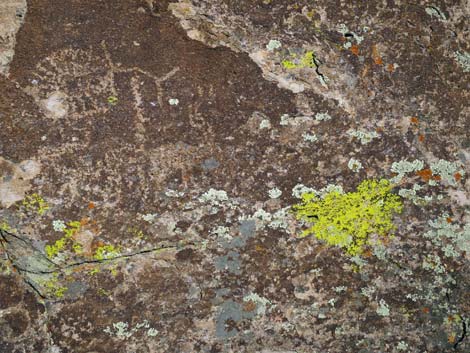 Various colorful lichens on petroglyph panel |
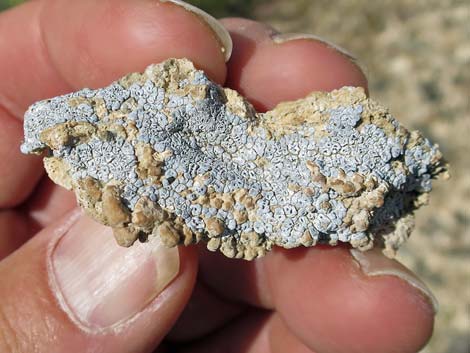 A gray form that grows on limestone cobbles |
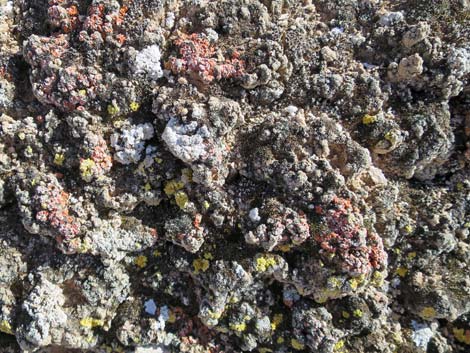 Lichens growing on gypsum soil |
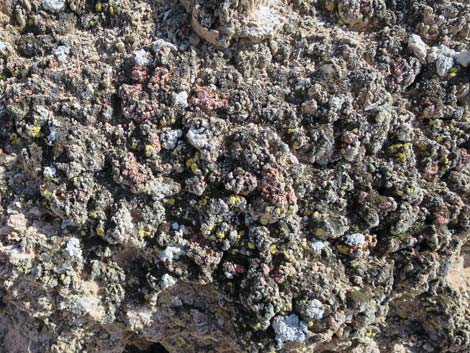 Lichens growing on gypsum soil |
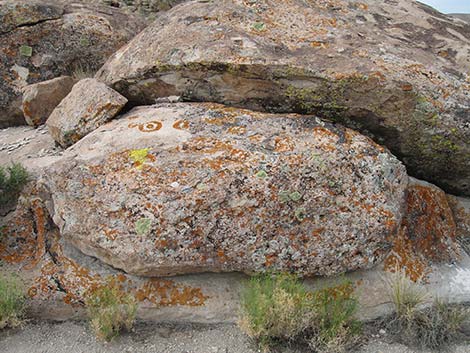 |
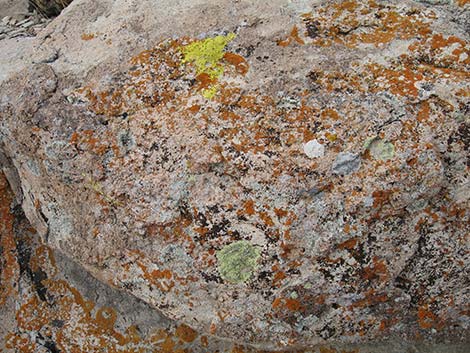 |
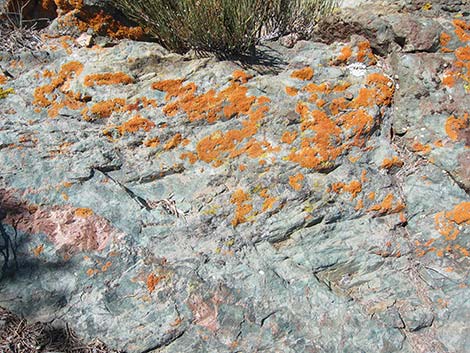 |
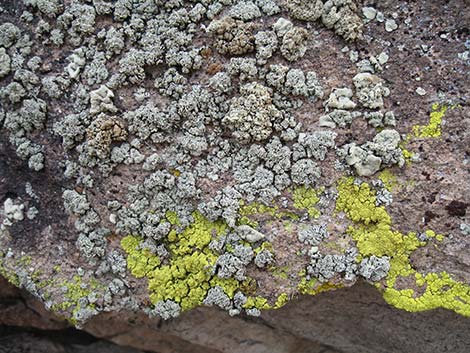 |
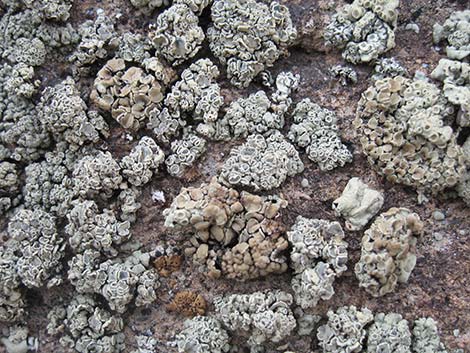 |
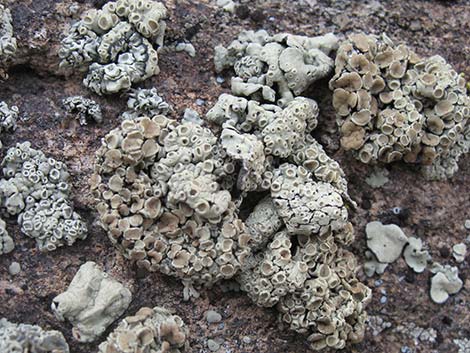 |
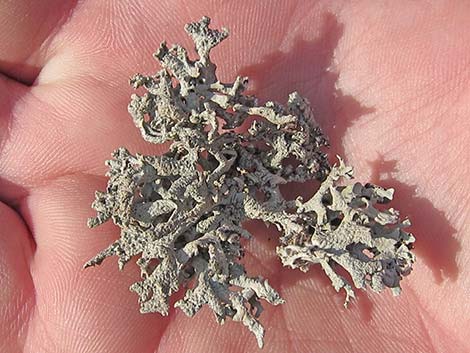 |
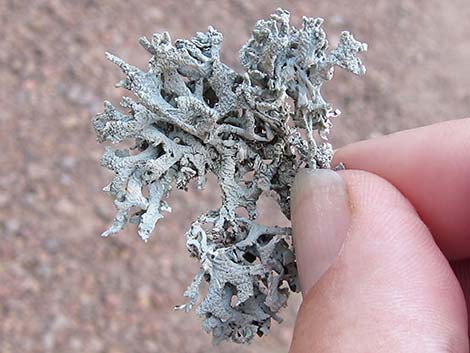 |
Note: All distances, elevations, and other facts are approximate. Names generally follow the USDA database.
![]() ; Last updated 211230
; Last updated 211230
| All Non-Vascular | Plant Species Index | Glossary | Copyright, Conditions, Disclaimer | Home |